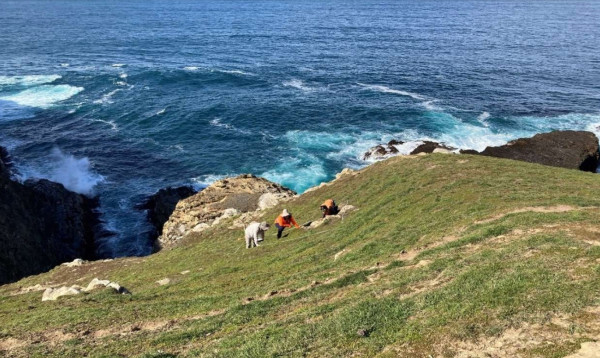Coastal turfs of Otago - Monitoring Plan
Coastal Turfs of Otago - Monitoring Plan
Naturally uncommon ecosystems are those that covered less than 0.5% of New Zealand’s land area in pre-human times. These ecosystems can be small in area but geographically widespread, or larger in area but geographically restricted.
They contain a disproportionately high number (85%) of New Zealand’s nationally critical, nationally endangered and nationally vulnerable plant species.
The Otago region has a higher proportion (70%) of types of threatened ecosystems than the national average. One of the threatened naturally uncommon ecosystems are coastal turfs which are threatened from agricultural and urban development. The Otago region contains one-fifth of all known coastal turf sites and the only locations of these ecosystems on the east coast of the South Island.

Coastal turf - Long Point (credit MWLR)
As part of requirements to report on the state and trend of biodiversity in the Otago region, the Otago Regional Council (ORC) is working to develop fit-for-purpose monitoring programmes for naturally uncommon ecosystems within their region. Coastal turfs were considered by the ORC ecologists as being among the highest-priority naturally uncommon ecosystems in Otago for the development of a monitoring plan to assist in ongoing management of these sites.
Using an Envirolink Grant, ORC contracted Manaaki Whenua - Landcare Research (MWLR) to provide expertise in developing a robust monitoring plan to measure changes in ecological integrity and extent through time. The monitoring plan provides guidance on representative sampling sites, monitoring methods, sampling timing, data management, data analysis and management options. These data will help inform decisions around the protection and ongoing management of these ecosystems.
Monitoring is now underway with four sites established so far and the remainder to be implemented later this year (2023). Monitoring will assist in the timely detection of ecological changes in coastal turf communities and will also provide an opportunity to link with other councils and organisations that are monitoring similar ecosystems to provide cross-organisational coordination to ensure consistency and to gain an understanding of nationwide trends.
Dr Scott Jarvie, a terrestrial ecologist from the Otago Regional Council, says “working with MWLR has added additional support to the work and has helped transfer knowledge from experts in this ecosystem type to regional council staff. The work has also helped to raise the profile of this naturally uncommon ecosystem amongst our council”.
Last modified: